Carnival in Sardinia
Tutti gli articoli
Tutti gli articoli
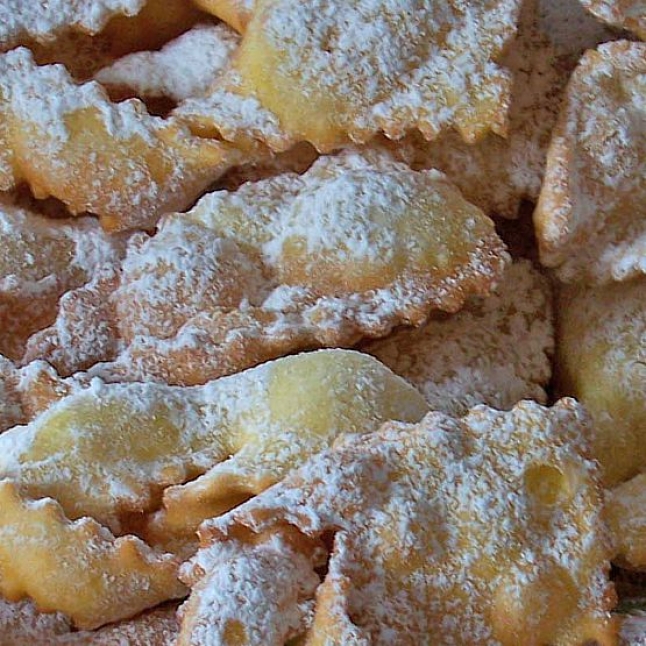
01 January 2016 Chiacchiere are meraviglie!
«During Carnival every dessert counts!». One of the most traditional is represented by chiacchiere, that have a different name according to the Region in Italy. In some areas, they are called bugie, in other, meraviglie (maraviglias, exactly in Sardinia).
This dessert, typical of Carnival, dates back to the Ancient Rome, during the celebrations that were appreciated by a big multitude of people, and for offering something fast for everyone, it was necessary to resort to some desserts that were served as fried. In the last years, some women used to prepare chiacchiere, using the remaining dough employed for cooking ravioli.

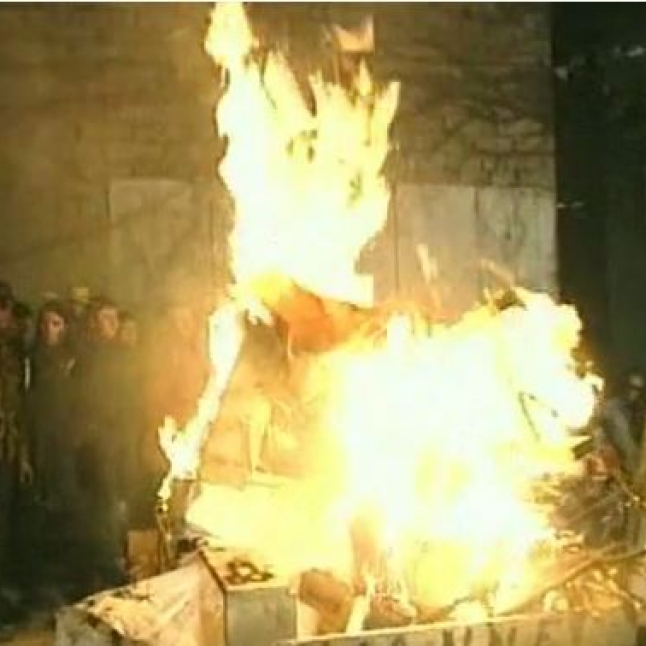
01 January 2016 Murronarzos and Maimones
The traditional masks of the Olzai Carnival are Sos Murronarzos and Sos Maimones.
The first ones wear black woolen gowns and some cowbells, and their faces are hidden by a wooden mask. The mask of "Sos Murronarzos" was revived a few years ago.
Superbly crafted, it takes animalistic shapes; it is always of a dark color.
"Sos Maimones" are masks that are distinctly cheerful and jokey that represent a sort of man-puppet.

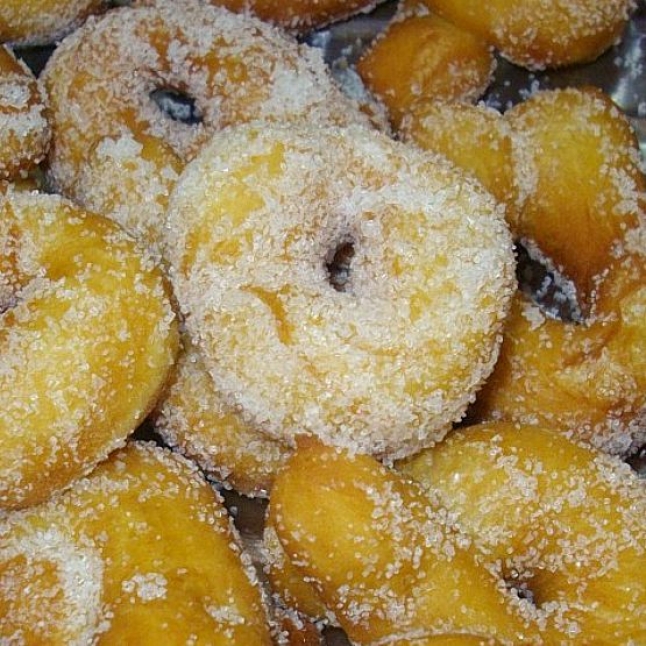
01 January 2016 Tzippulas for Carnival
Is tzippulas are the delicious pancakes, typical of Carnival and rigorously artisan, prepared by the expert hands of women who respect the traditions of their village. It is a dessert that is appreciated in the whole Island, but it is certainly typical of the Central Sardinia. Narbolia is the most important village where people dedicate themselves to cook is tzippulas of Carnival.
Being a dish typical of the period of the year when people love organizing events related to joke, in ancient times, some women used to enjoy themselves putting something into dough of is tzippulas, for instance some buttons of shirt. When they served is tzippulas, they waited with apprehension for the moment of the first mouthful, because they looked forward to laugh, when people noticed to have been cheated.

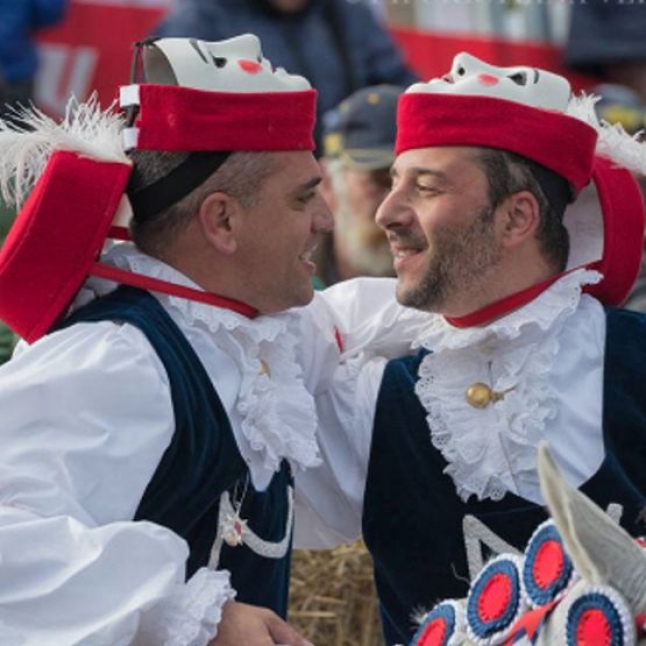
01 January 2016 Beyond the mask of the Sartiglia
Tense, smiling, exultant faces. Sincere hugs of friendship and true love. Gazes taken from the time and made unique by one, searched click, frantically and finally found.
Fun, lightness and graceful coquetry: all moments captured by Cristiana Verazza in the Sartiglia of Oristano.
We met Cristiana in her big house of Sanluri and we asked her to tell, in words as well as in images, her experience.
Q: Your Sartiglia is very original and different, with unusual shots, almost intimate moments of the protagonists: why did you choose to document the less "solemn" side of the event?
A: Yes, I wanted to go "beyond the mask", to show to other lovers of the carousel their faces concealed by those who in those days become a little the "heroes" of all.
Q: Your passion for the Sartiglia and photography is becoming more and more important, judging from your shots.
A: I have always had the passion for the Sartiglia, but I have started to take shots of it only recently. Every time is like coming to find old friends from whom I feel affectionately welcomed, and they let me free to take pictures in the way I like. I live the event just if I was from Oristano, but with the "peculiarities" of not being such.
This means not having constraints or preferences for a Guild rather than another.
I enjoy every stage of the event and I share all or almost all of this joy. The love for photography is rather alive and kicking: I just wish I could have more time to dedicate to it, because taking pictures means constantly seek perfection that I almost have the certainty of never reaching. The path is therefore always new and exciting.
Q: What do you enjoy and what excites you the most?
A: What amuses me so much is the painful and funny relationship that has now begun with all the people that I find again each year. From the Componidori and ex Sartiglia riders and former security officers, colleagues with whom I share the limited space reserved for reporters.
During the pairs, which are so difficult to photograph, are also born little squabbles, as light as the feathers of the drummers or trumpeters that generated them: the shots invaded by the plumes provoke jokes that fade always in teased, light and affectionate jokes.
We are still in the Carnival. The emotion arises spontaneously from the beauty of the horses and of the costumes, because I feel it represents something unique in the world; and what about the skill of the riders? As I said, I love the Sartiglia in every moment: from the dressing at the exit of the venue of the Guild, to the race towards the star in "Sa Remada", and the diabolical pairs of which I can take some very beautiful frontal shots that have made the rounds of social networks, in, often, an improper manner.

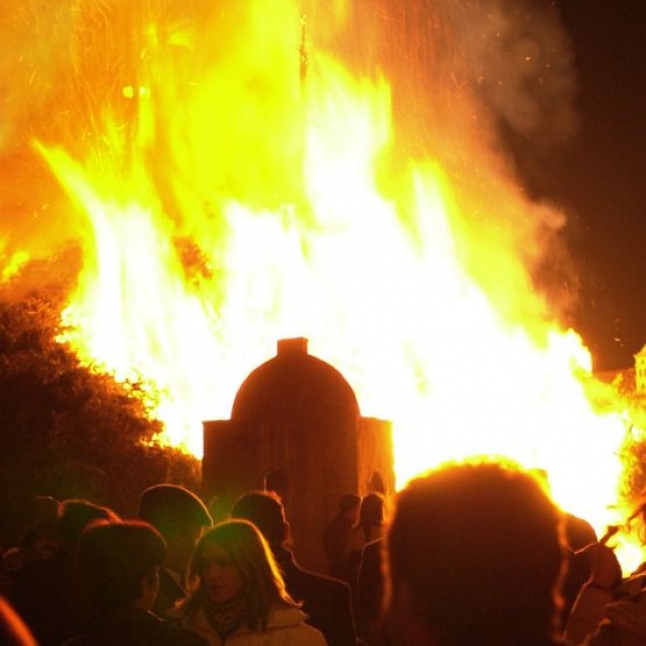
01 January 2016 The feast of Saint Anthony the Abbot
In the night between the 16 and 17 January, in the whole island, but especially in the inland area, or in centers strongly conservative of language and traditions, in each of these villages, during that night burns a huge bonfire in honor of Sant'Antoni de su Fogu (St. Anthony the Abbot).
In the Island the worship of this saint is very old and very sensitive. The myth that revolves around St. Anthony has its roots in the mists of time, when, by adhering to the legend, the saint descended into hell defying the demons, to steal a spark glowing, to bring it on the earth and to give it the fire to humanity.
It is easy to see how the fire in honor of Saint Anthony, (whose translation in the Sardinian language varies from place to place: su fogulone, su foghidoni, su fogu, sos focos, sas frascas su fogadoni, to mention some of these) and an event charged of meaning and it represents, not only for the legendary aspects already seen, but also about those rituals, sacred, folk and not least for the fact that performs an important function of socialization and aggregation, a very significant moment of great charm of the Sardinian tradition.
Sant'Antoni de su Fogu is the patron of agriculture and pastoralism, (core tasks in Sardinia) and it has on the shepherds and farmers a strong influence.
He is therefore one of the most venerated saints by the faithful.

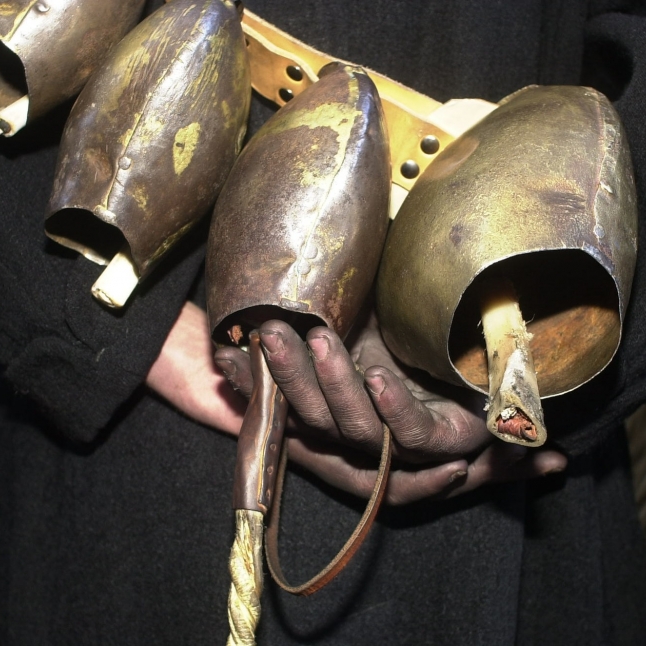
01 January 2016 Urtzu and Mamutzones
Another recent discovery has been the typical mask of Aritzo. Two masks to be exact, recently returned to the fore: "s'Urtzu"and "Mamutzone".
The ritual in this case includes a sacrificial victim (Orcus in the Etruscan mythology was the God of the underworld), represented by "s'Urtzu", and the figure reproduced by the " Mamutzone", an animalistic man.

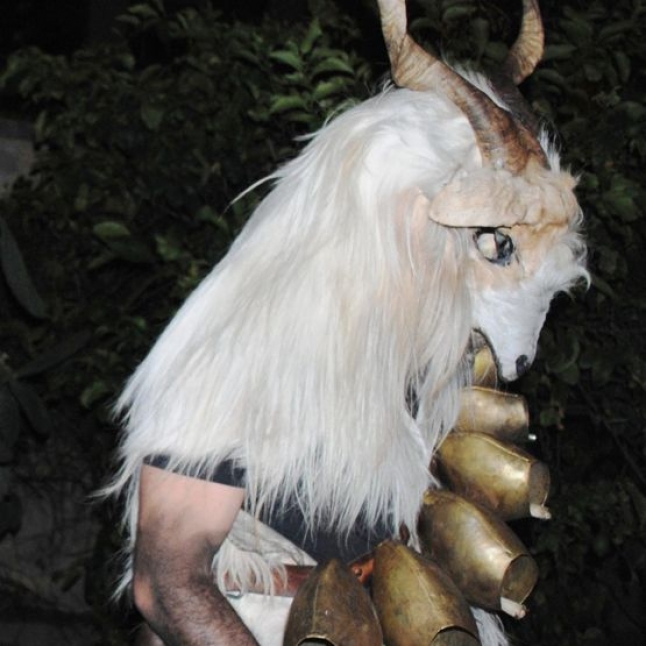
01 January 2016 The Mamulada
Were several decades on the streets of Seui that the ancient masks of "Sa Mamulada" was not seen more, a mask whose origin is lost in the agro-pastoral ancient culture of the mysterious island of Sardinia.
Some possible interpretations lead us to believe that it whould served as an incentive to the nature for its upcoming spring awakening, then with a propitiatory function.
Common features of Seui mask is that all or most of the figures that have blackened face, wear animal skins on the traditional male dress, wear some big leather belts adorned with many bells and on the head have headgear packed with mouflon or goat skulls.

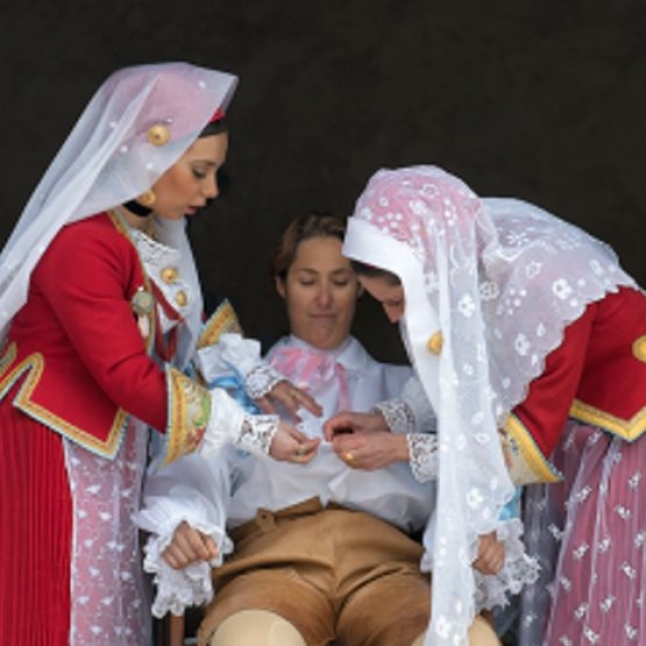
01 January 2016 La Sartiglia
During "Sa Sartiglia", Oristano has an exceptional showcase for its territory. A land full of delicious products from farms, vegetable gardens, orchards in the area of Arborea, the rice fields, the fish of Cabras and its delicious bottarga, the good wine, the culinary tradition and craftsmanship in jewelry and ceramics.
A territory rich in history that can and must be open to other horizons.
One arrives early in Oristano, although the festivity begins only in the afternoon. Around half past 9, it is obligatory to stop at the bar of the friend Antonio Sanna, jockey and skillful "catching stars" as a boy. Excitement, anxiety and some nervousness and bad weather conditions could damage the tracks covered with sand.
The city center is a bustle of people, tourists, boys and girls having fun during the festivity and paint their faces, dressing up. So many things are to be seen in this city of central Sardinia that boasts an important historical past as the capital of Judicature of Arborea, which had the first woman judge, the famous Giudicessa Eleonora, who gave to her territory of a body of law, the "Carta de Logu", an amazing example of the ability to govern in the fourteenth century. Thanks to this, some of the riders who ran during the competition were women. Not only that, but also the choice of "Su Componidori", the head race, would fall on a woman.
The Dressing is an exciting rite. It is not easy, in fact, to access to this liturgy of strict rules. The guests are chosen by the Guild and perhaps, if you are patient in front of the access portal and you resist two hours standing inside, you have the privilege to attend.
The ritual is long, but never boring. For every gesture, even tying a ribbon or sewing the bandages around the head, accompanied by a frantic roll of drummers and the blare of trumpets that creates the rhythm that defines the sacral language. The dress is almost sewn to the Demigod. "Sa Massaia Manna", the mistress of ceremonies, fixes in the end the pink camellia rose to the heart of the "Componidori".
After a toast, the head-runner can mount the horse in its elegant colored rosettes and in its superb gait, which makes its entrance in a courtyard surrounded by the eerie silence of the public. The Procession starts in the racetrack that goes on in front of the majestic Cathedral in the city center.
The ride begins at the roll of drums and the blare of trumpets. The first descent is "Componidori"; his bizarre and indefinite mask; it conceals the identity and everyone is hoping that it actually is a "catching star", since that will bring good harvests.
Piazza Manno, where the running begins, down to Via Duomo and then off to St. Anthony, the calculation has to be fast and no mistakes are allowed. Moreover, measures have been taken during the crossing of head-runner's swords with their "Segundu"(the second): they met three times under the star, located in via Duomo.
Here comes "Su Componidori" on the top of the street. He's already at speed and slowly tips the sword in front of him. The horse gallops with no uncertainty and a moment before the crucial point, he gives strength to the arm, piercing the star. The audience is roaring, screaming in joy and cheering the big test of the demigod who managed the miracle of the dexterity of the first star.
From that moment, the race heats on. The strategy of the head-runner is simple: piercing as many stars as possible.

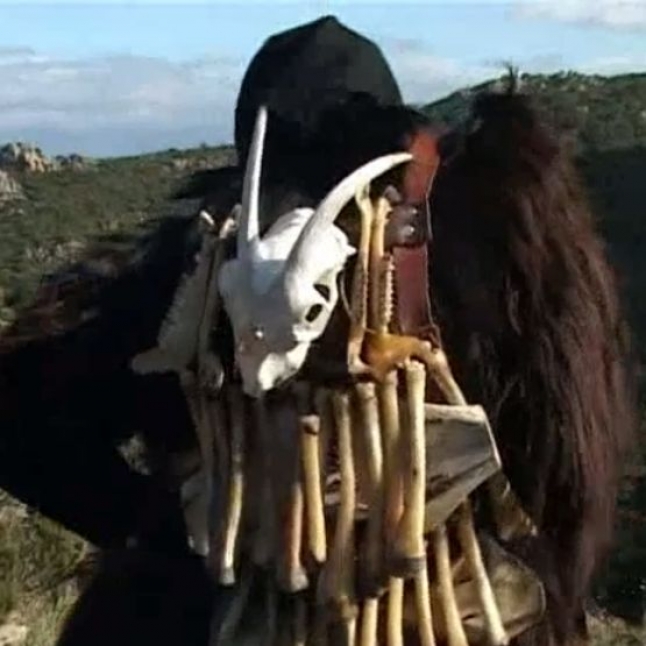
01 January 2016 Sos Colonganos
The thing that distinguishes sos Colonganos, (from Kolos = sheep), typical mask of Austis, is the absence of a typical element present in all masks of Barbagia: the cowbell.
In a number more or less consistent, the cowbells are a distinguishing feature of all traditional Sardinian masks.
Sos Colonganos masks stand out because of this.

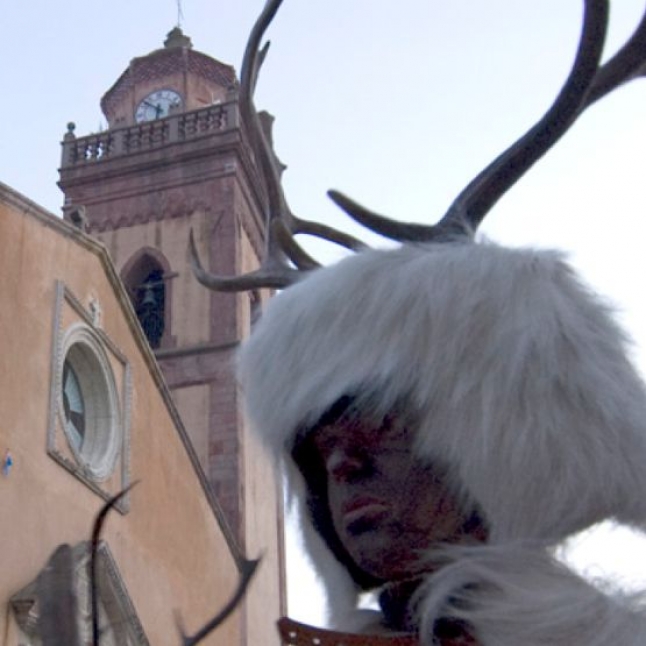
01 January 2016 Sos Corriolos

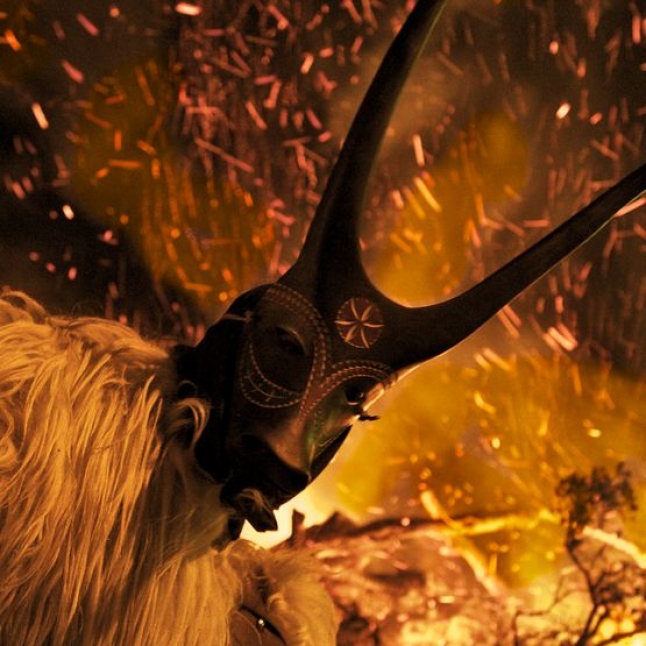
01 January 2016 Boes and Merdules
Also that of Ottana, it is one of the most fascinating and famous Carnivals in Sardinia.
Two figures of clearly farming origin are the protagonists of this carnival: sos Boes, namely the oxen, by a beautiful beef mask, finely finished and carved; they are covered with white sheepskins wearing a belt of big bells and sos Merdules, represented by men with the faces hidden by gloomy black masks, sometimes with deformed features; they wear white skins, leather chaps and classic shepherd shoes.
Unlike of the Boes, the Merdùle clutch a stick and a leather whip called soca.
This whip is used to keep tied up the Boe, which stirs and rebels before falling exhausted on the ground.

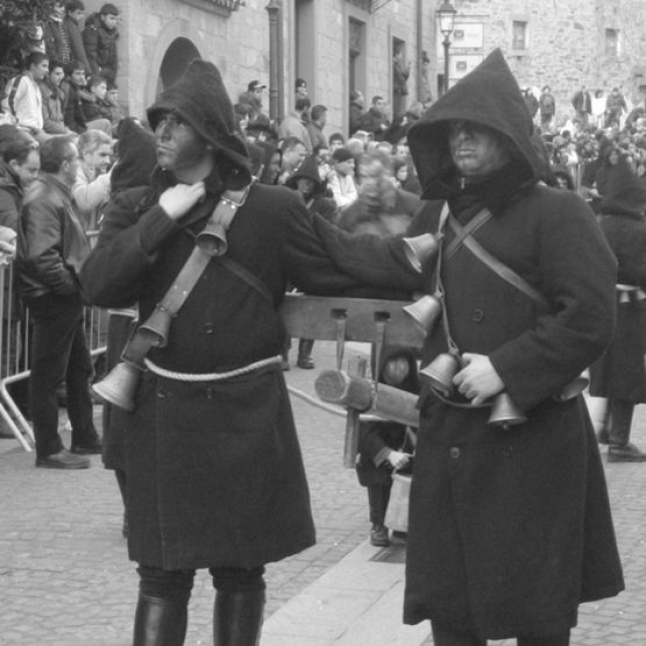
01 January 2016 Sos Thurpos di Orotelli
Thurpos. Translated: blind, crippled. The typical mask of the carnival of Orotelli is represented by these figures that wear a long coarse wool black coat, chaps and shepherd boots.
It distinguishes them even a small chain of cowbells lead with a shoulder strap.
Sos Thurpos do not have a real mask. In its place in fact, the custom requires them to paint their face black.

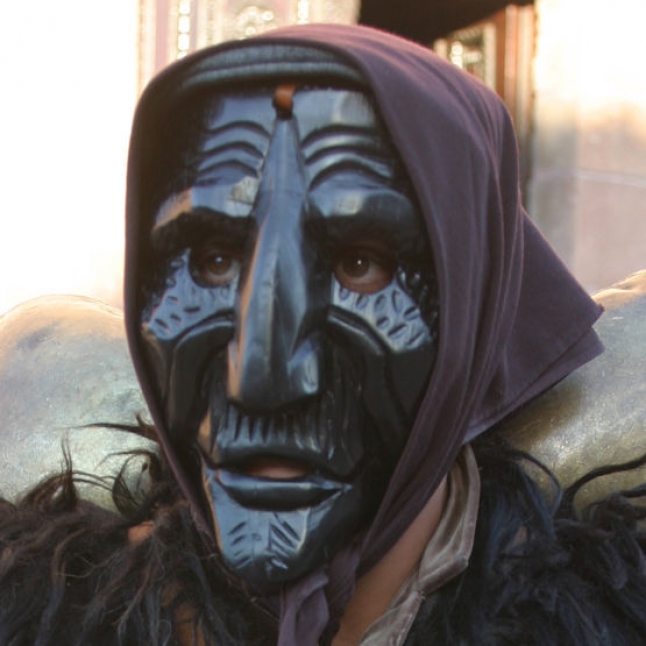
01 January 2016 A brief history of Carnival in Sardinia
It is certainly not easy to investigate the origins of a festival such as the Carnival, since no one was willing or able to keep historical records.
As much as the etymological derivation is discussed, the term "Carnival" seems to probably come from the Latin "carnem levare" ("eliminate the meat"), which once indicated the banquet that was held during the last day of Carnival (Mardi Gras), immediately before the period of abstinence and fasting of Lent.
The same word, therefore, emphasizes the rebellious and subversive festivity.
In fact the short period of the Carnival can be defined as a "period of chaos," of the world upside down, in which "the fool can become king and vice-versa", because any kind of hierarchy falls down. Through the masking one can get out of the daily routine, deny and discard themselves from their roles and social obligations, so they can become anyone else.
The tensions and the problems of life are temporarily forgotten, for to be later restored at the end of the festival. From a historical and religious point of view, the Carnival represented, therefore, a symbolic renewal period during which chaos replaced the established order, which, however, once exhausted the festive period, reemerged new or renewed and guaranteed for one valid cycle until the beginning of the next Carnival.

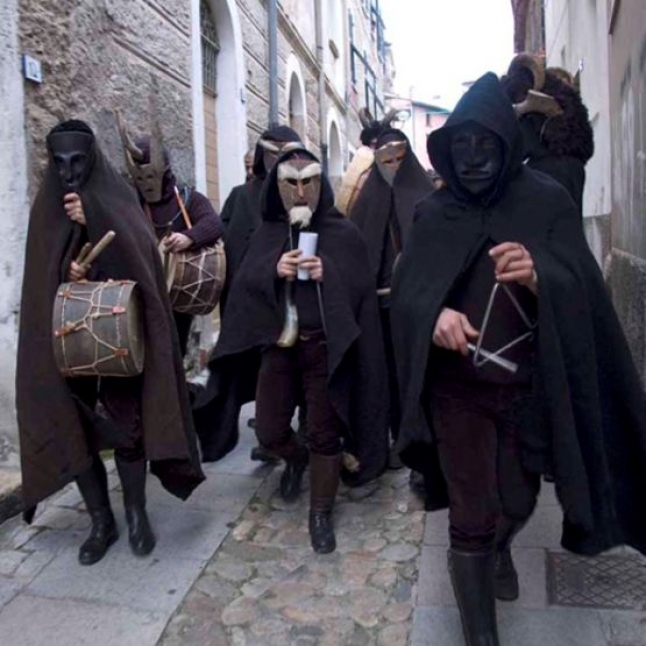
01 January 2016 Sos Tumbarinos
To animate the streets of Gavoi during the days of the Carnival are "Sos Tumbarinos", the drummers.
"Sos Tumbarinos" play crazily their small drums, handmade with sheepskins that are accompanied by other instruments such as triangles or fifes.

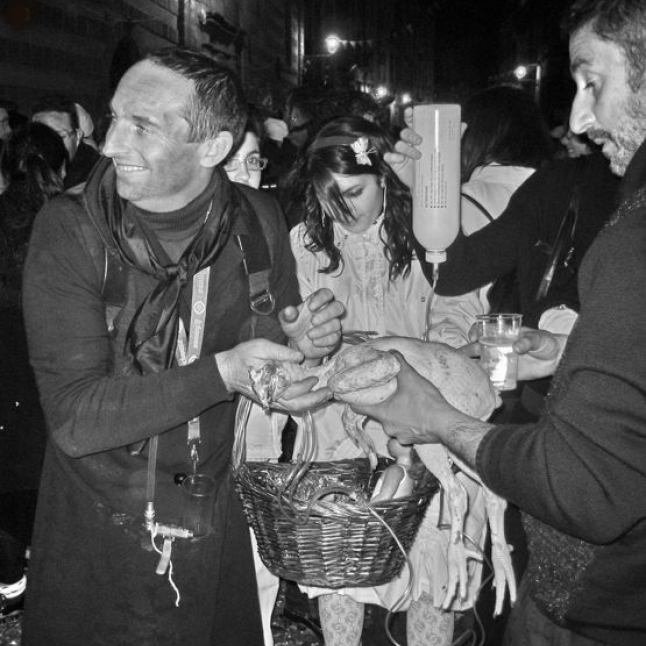
01 January 2016 Carrasegare Osincu
The Carrasegare Osincu is a Carnival unique in its kind in Sardinia for its literary and usual Goliardic feature. Bosa becomes the carnival proscenium par excellence, during which are alternated satire and irony, in clear contrast with the other traditional Sardinian Carnivals soaked of an innate tragedy.
The word defining the winter celebration is indicative of its most important days, as Sunday, Monday and Tuesday.
The week previous to Shrove Thursday inaugurates the beginning of the essentially playful festivity, aimed to the laugh and the fun of the whole community, that feels to be completely involved in the preparation and in the implementation of the official Carnival scenic representations. This time frame of ceremonial opening is called “Lardazholu” or “Laldaggiolu”, when groups of dressed up people burst into the other people’s house for collecting of alms. The folkloristic scene starts through the rhetorical question “sa palte cantare?” and through a continuation of traditional songs, such as “gosos” or “trallallera” in exchange for which they receive foods for the culinary organization of celebration.

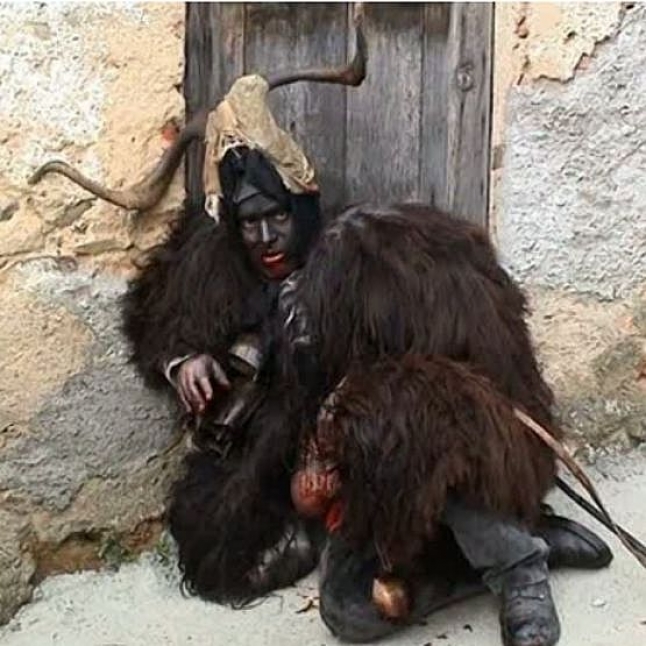
01 January 2016 Su Battileddu
The archaic rite of the Lula carnival expected, in the distant past, the sacrifice of a victim in the flesh and bones.
Today su Battileddu wears sheepskins, his face is painted in black and the lips in red and carries some big cowbells on his shoulders.

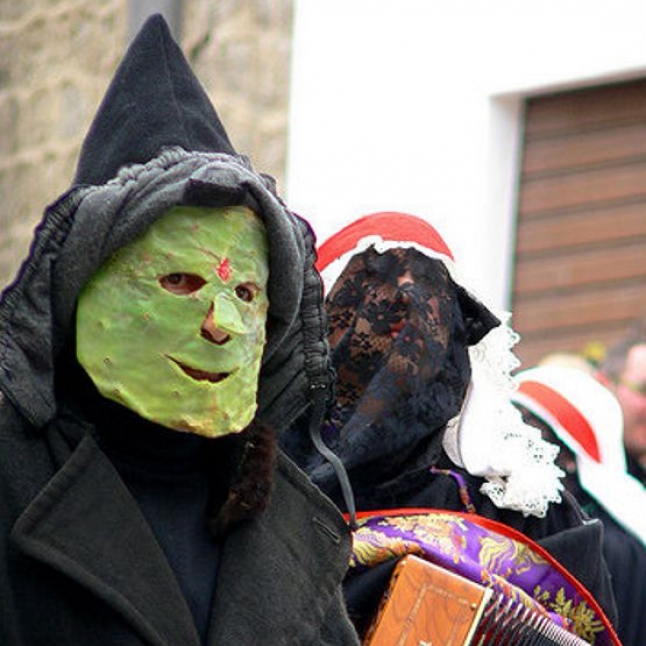
01 January 2016 The Carnival of Sarule: the Maschera a Gattu and Su Maimone
January is certainly the start point of the period of Carnival; it is the exact moment that indicates this beginning. In Sardinia, a territory of folklore and traditions, the various villages and the various towns offer an open air museum of costumes typical of this celebration. Each of these guarantees color and fantasy in the representation of the clothes typical of own area, but some represent the top of distinctive trait and uniqueness.
Among these excels Sarule, a village in the province of Nuoro, whose characterizing feminine costume, the Maschera a Gattu, is really unique, because it has, as a main symbol, elegance, that is present above all on the mask worn on the head. Indeed, it is composed of a black lace veil put on the face, of a white canvas light blanket on the head and of a red band, that blocks the overhead light blanket.

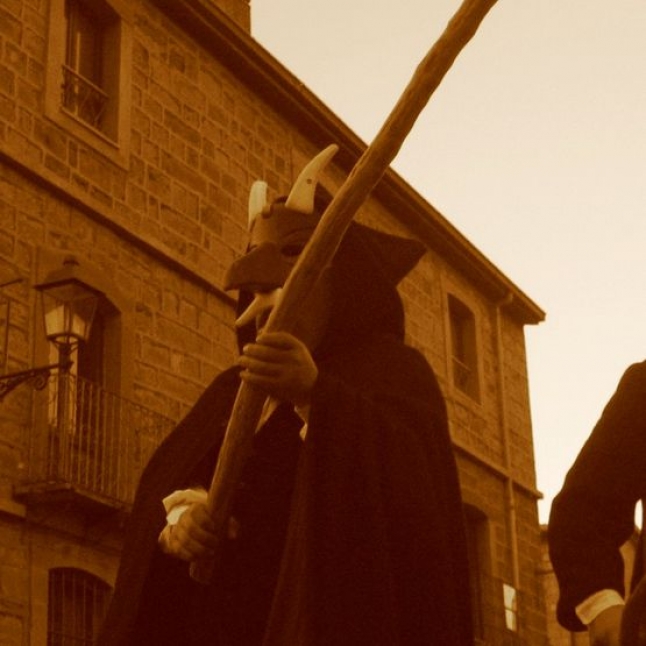
01 January 2016 Su Bundu of Orani
One of the most mysterious and interesting masks of the entire Sardinian carnival is that of Su Bundu. All the carnival of Orani is focused around this figure.
The Bundu is easy to recognize. It wears traditional farmer clothing with heavy winter overcoat under which he wears a shirt and a bodice, velvet trousers and traditional chaps.

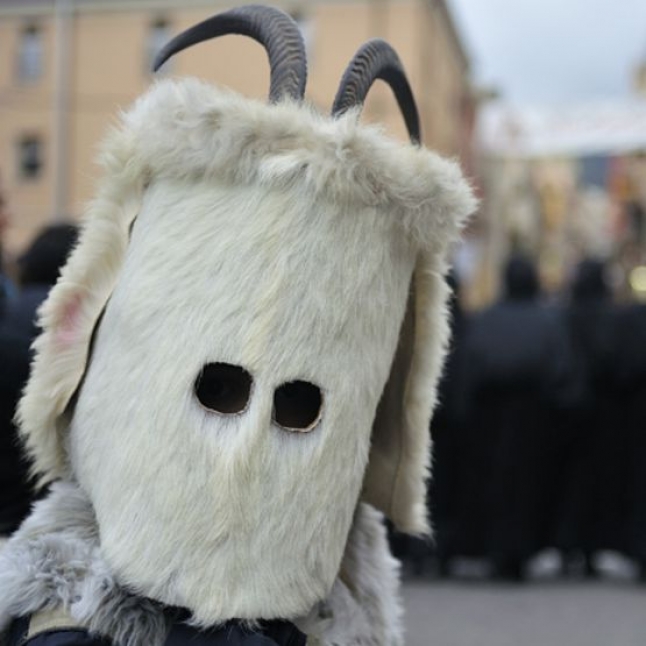
01 January 2016 The Corongiaiu of Laconi
In Laconi there is a Carnival tradition very lively and deep, centered on a mask which in the past fell into oblivion and that recently has been rediscovered: the Corongiaiu.
Until the thirties of the last century "is corongiaius" made their first outing in the evening of St. Anthony's Day, on January 16, as all masks of Barbagia, animating the Carnival of Laconi with their dances and their ancient ritual. From 1935 the mask has mysteriously disappeared.
Therefore, the reasons of an oblivion eighty years long are obscure.
So long is, in fact, the period of time during which the "Corongiaiu" remained in the shadows, even at the risk of losing its memory.

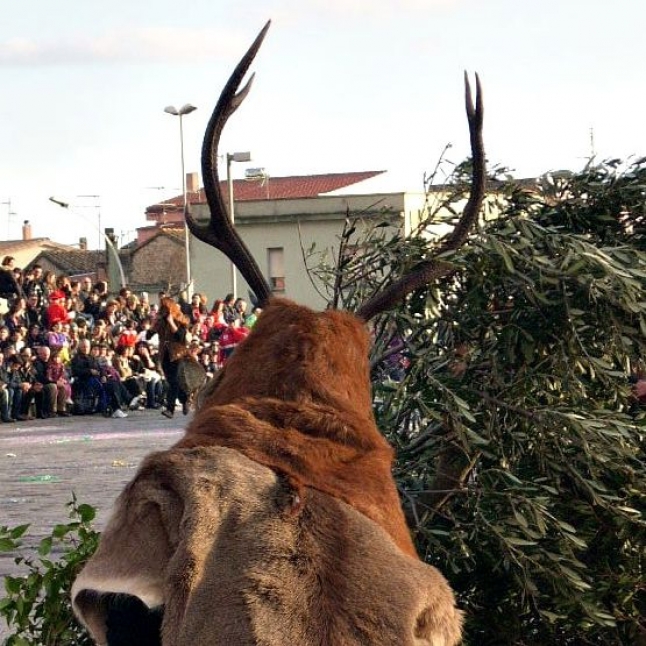
01 January 2016 The deer of Sinnai
Is Xerbus or Is Cerbus is an ancient tradition of Sinnai unchanged during the years since 1800 until nowadays. The Carnival plays of Sardinia have pre-Christian origins, as well as the Carnival of Sinnai, formerly called segàrepezza (cutting meat) with an etymological reference to the habit of people of butchering and eating meat in a greater quantity.
In Sinnai Carnival is different for the peculiarity of anniversary implementation, very hoped for children and adults, because it represents a moment of town sharing.

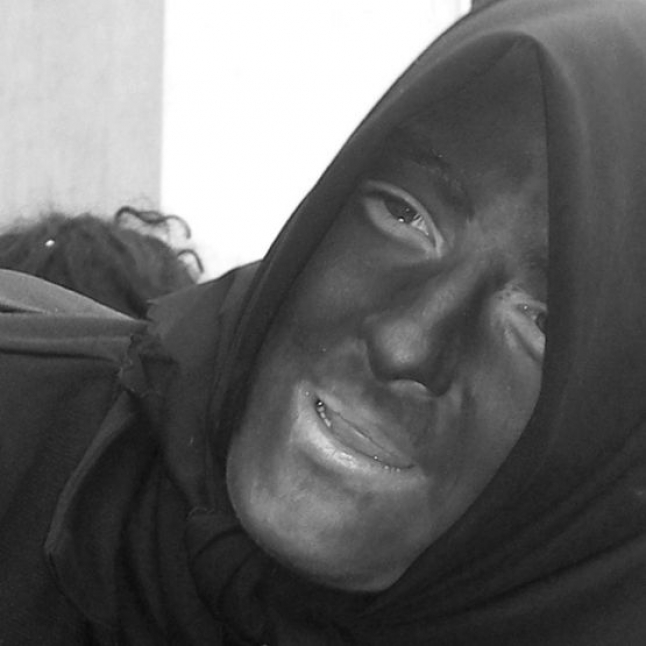
01 January 2016 The Maimulu of Ulassai
The term "Maimulu" refers to the carnival event that takes place in Ulassai.
The name "Maimulu" is a variation of the term "Maimone", the ancient god of the Sardinian mythology, linked to the worshipping of water and rain, invoked by farmers and shepherds: "Maimone, Maimone abba cheret su Laore, abba cheret su siccau, Maimone laudau"! ("Maimone, Maimone the wheat asks for water, the dried asks water, praised Maimone").

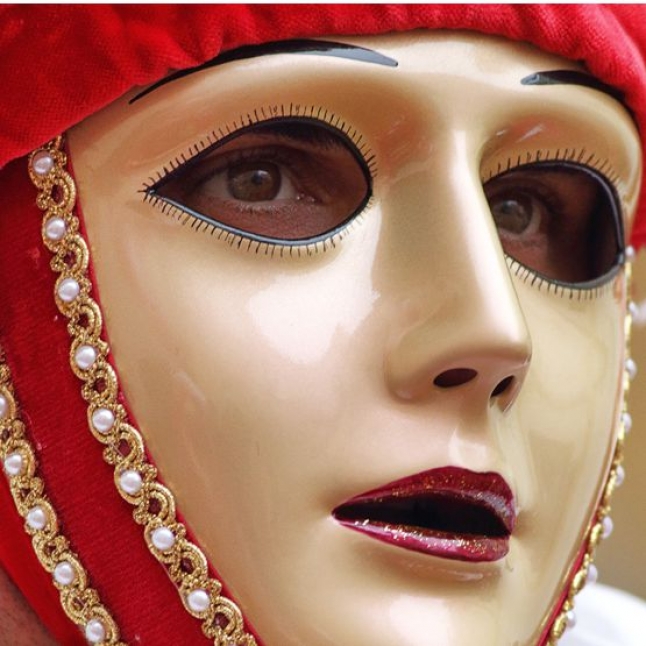
01 January 2016 The happy melancholia of Sartiglia
I had always heard about the Sartiglia of Oristano and sometimes I used to watch it carelessly on television, but I had never seen from life one of the two days in which is held every year.
Until about five years ago, a friend photographer of great sensitivity, in love with Sartiglia, invited me to experience it. Because an experience is it, a special feeling.
It was Sunday, the day dedicated to the Gremio dei Contadini (the Farmers Corporation) and was love at first sight.
Totally fascinated by so abundant beauty, the masks sometimes disturbing and mysterious, the multicolored clothing of the riders, the bright red, the white embroidered shirts adorned with bright gold, black-velvet costumes, almost one with horses from shiny coat, imposing, elegant, ready for the final sprint.
All the magic of the Sartiglia conquered me.
And today, each time it ends, I feel inside me a touch of melancholy, because I wish it would never end, and while the last acrobatic team descend at breakneck speed, cheerful, overflowing the youthfulness and freshness of the knights, I feel nostalgia.

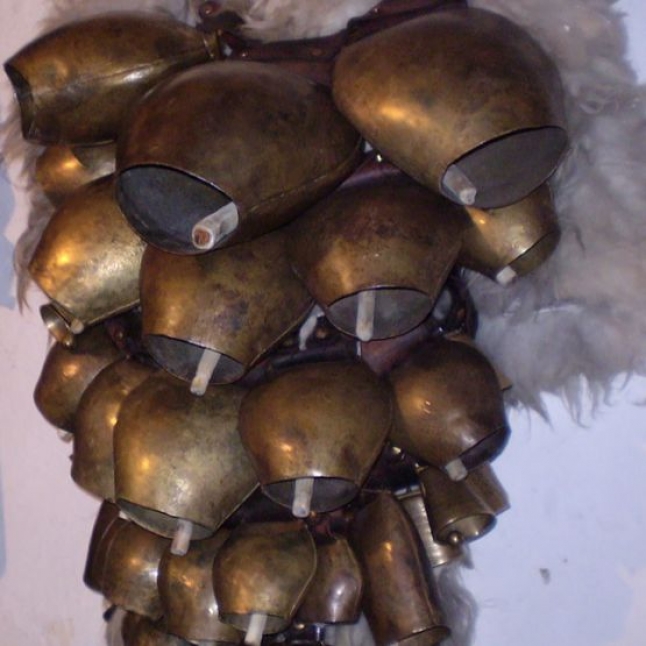
01 January 2016 S’Urtzu and is Sonaggios
In Ortueri the two masks around which the Carnival takes place are the Urtzu and the Sonaggios.
"S'Urtzu", the demoniacal ogre, is the typical animal mask. He wears a black sheepskin, with his face painted black and has, around his neck, a big rattle.
His impetus and his fury is kept at bay by a character with human features that keeps him subdued.

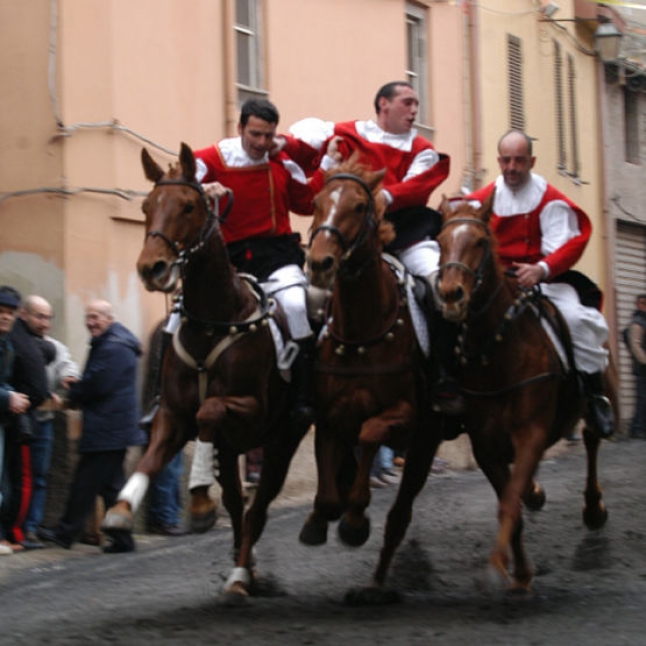
01 January 2016 The reckless Carrela e'Nanti of Santu Lussurgiu
On the eastern side of the subregion of Montiferru, there is Santulussurgiu, a pretty village with a beautiful historic center where has been preserved an ancient cobbled which is one of the more important features of the village. But the village of Santulussurgiu is especially famous for Sa Carrela e' Nanti.
Literally translatable as "the road ahead".
We are talking about the most daring, challenging, daring and fascinating horse racing that exist in Sardinia, that became over time a must for lovers of racing and of the traditions of the Sardinian Carnival.
It is a very ancient event of extraordinary participation of the audience that, together with the Sartiglia of Oristano and the Ardia of Sedilo, it is one of the deepest event of Sardinian folklore that celebrates the indissoluble relationship between man and horse.
To give the name of the event is the twisty "Carrela e' Nanti", the current via Roma, in the historical center of the village.

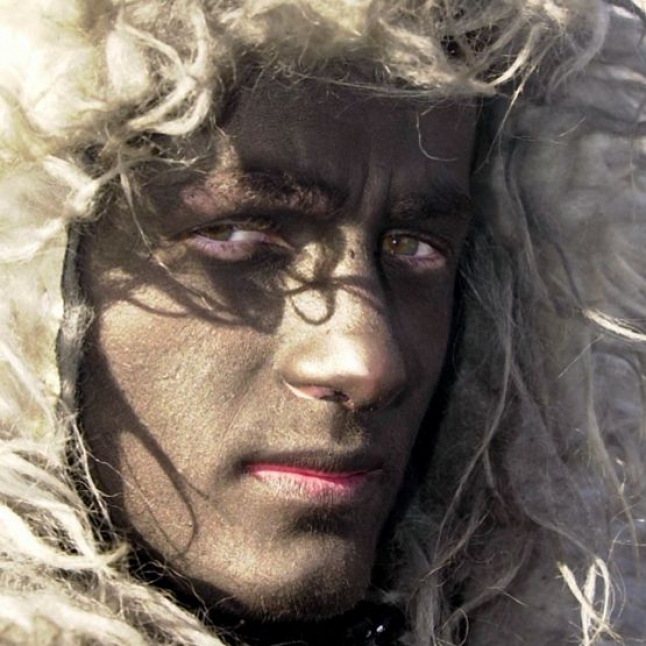
01 January 2016 Urthos e Buttudos
The typical masks of the carnival of Fonni are essentially two: the Urthos and the Buttudos. “Urthos” means "covered" and “Buttudu” is a term that refers to an uncastrated mutton.
“Sos Urthos” masks are animalistic, represented by a dress made of white goats skins, or more rarely in black, with the face painted in black, while hooded men try to tame them. They represent guardians dressed in black, with their faces painted and, around the neck, a weathervane of cowbells called “Sos Buttudos”.
These two masks represent "Sas Mascheras Bruttas", "dirty masks", as opposed to "clean masks", "Mascheras limpias", which are present as well.

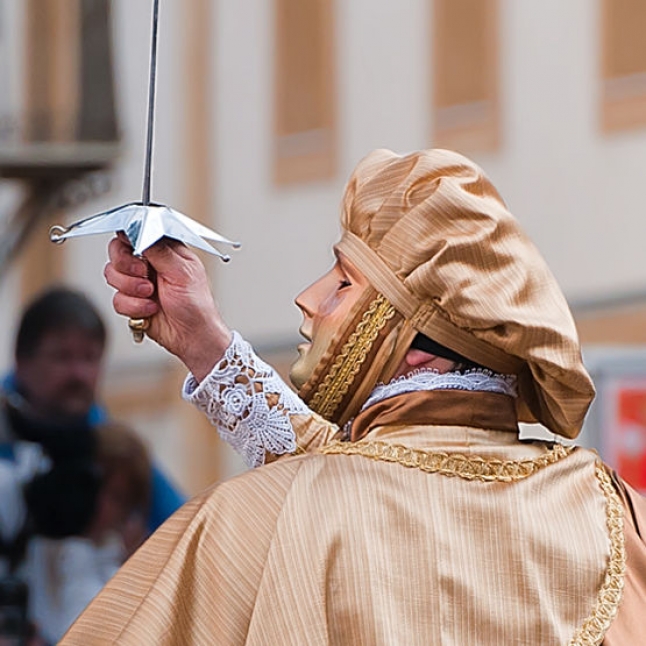
01 January 2016 The ancient Oristano Carnival ride
On 7th and 9th February will be held in Oristano sa Sartiglia. This celebration of Spanish origin, is a reckless ride in which participants, on horses running at full speed, have to center the star suspended in midair and arranged along the tortuous path of a street in the city center.
But sa Sartiglia is much more than this: it is a show of particular charm in the middle between the Christian religion and the pagan magic. The star of the festival is the Componidori, a skilled rider chosen by the Guilds (associations of arts and crafts), to impersonate a kind of demigod to which depends the crop: if he or she manages to run the star through, the land will bear fruits, if not we will have to wait a lean year.
Everything in this celebration has the flavor of enchantment: it begins with the clothing ritual of the demigod.
In the hall of the Guilds, over a wooden platform, the Componidori is dressed by a group of women, "is massaieddas" (in the tradition they had to be virgins), directed by "sa massaia manna". The rider will not have to make the slightest gesture to help the women in this task and he should never touch the ground until the Sartiglia is completed.
Around the face of the rider is placed a white cloth and, falling on the shoulders, a lace veil; the mask, surmounted by a top hat, is then fixed to the chin by a green satin ribbon.
The mask of the Componidori is particularly impressive, having no expression, perhaps to suggest, symbolically, all.
In the room they make the horse enter and it is delivered to the rider, together with sa Pippia 'e Maju (the girl of May), a bouquet of violets and periwinkles with which the Componidori will bless the crowd attending the ride with signs of the cross.

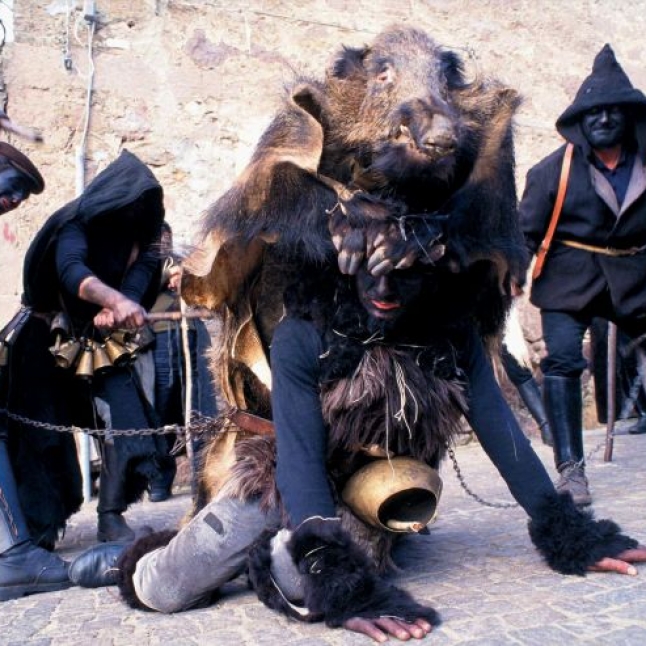
01 January 2016 The Urtzu and the Bardianos
Here, as well as in other Sardinian Carnivals, we can find "s'Urtzu": the animal mask that wears a boar fur, holds a cowbell around the neck and carries on his back "Sa Zippa", a large piece of cork which serves to protect him from the blows of clubs used by the Bardianos.

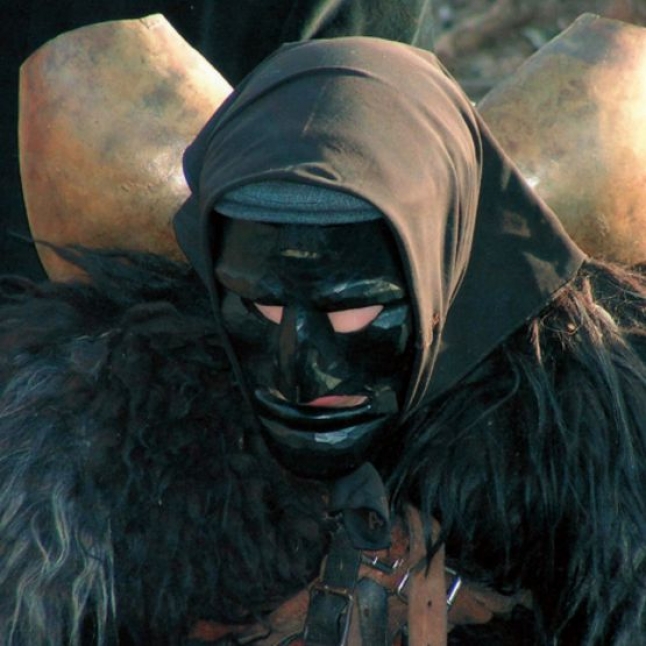
01 January 2016 Mamuthones e Issohadores
Probably that of Mamoiada, is the best known Sardinian carnival and one of the few to have crossed the borders of the Island.
The characters of the Carnival of Mamoiada are the Mamuthones and the Issohadores.

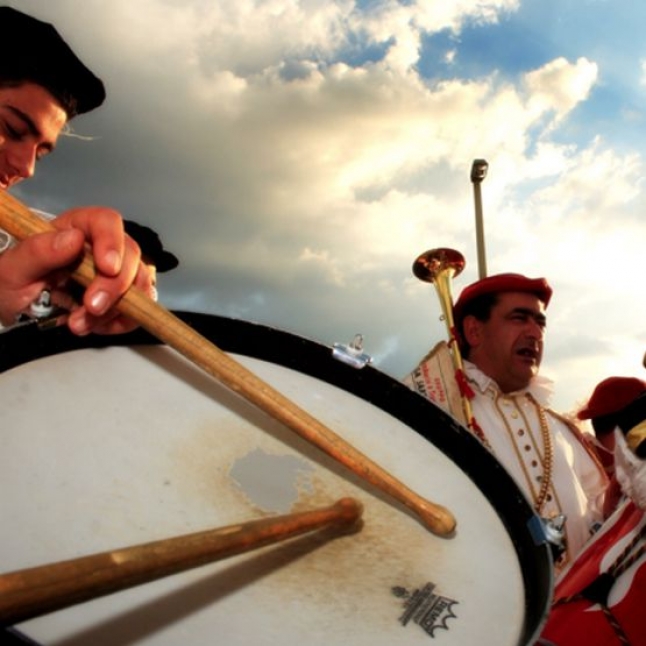
01 January 2016 Urzus, Mamutzones e Omadore
Original and charming, the carnival in Samugheo focuses on two key figures: the Mamutzone and Urtzu.
The first wears goat fur, fustian trousers and a belt of bells. There is not the mask.
The Mamutzone face, in fact is painted black. The most interesting element is therefore represented by the headgear: a container of cork, covered with sheep fur with a couple of powerful horns that stand on the top.
However, the Urtzu wears a black goatskin and is strewn with massive cowbells.

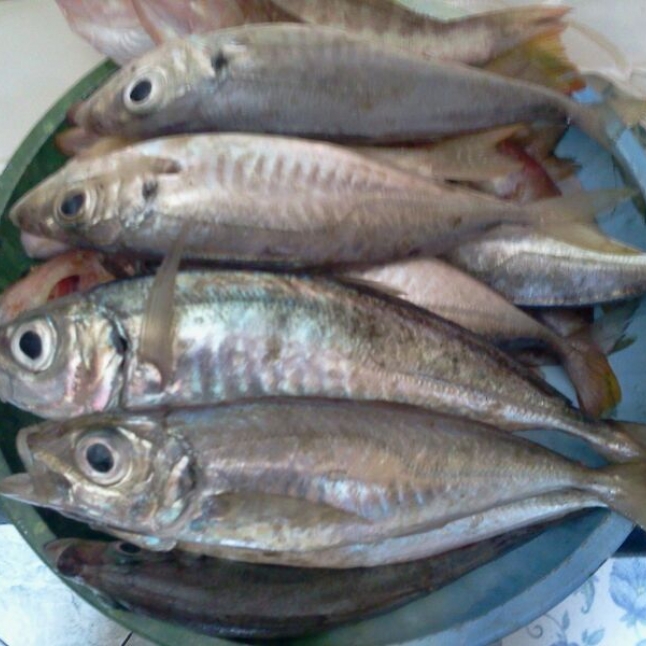
01 June 2015 Sardinian sea: the typical day of the lovers of the sport fishing
Sardinian sea is with no doubts one of the most abundant of fishes. When you watch documentaries on TV, you can notice that lots of videos were previously filmed in the Island. That is why Sardinian sea is the most esteemed by who loves fishing activity.
On a sport level fishing is obviously a passion for who practice it and not whatever duty. And Sardinian sea gives the possibility for examining a variety of areas where lovers can dedicate themselves to their hobby. Through the tales and the explanations made by a sport fisherman, you can know his typical day together other fishing lovers.
Normally, he wakes up at 6 a.m. and at 6:30 he has already been in the sea. But, it is a good rule to check the weather prediction both the day before and the morning of the journey, because it is important to inform himself about the weather that is forecast for the day ongoing and because, in this way, it is possible to choose the most suitable destination for fishing in that day. Indeed, if the sea is rough and depending on the wind, he is inclined to stay preferably near the coast, and the fisherman friend and his mates explore the area of the Gulf of Oristano.
